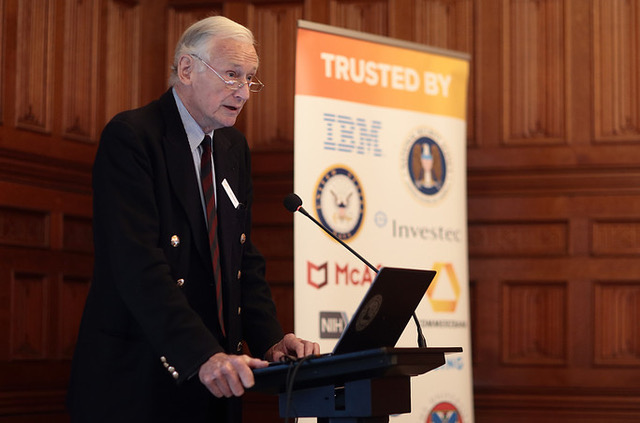Bridgeworks CEO David Trossell, speaks to TaaS Magazine about the latest developments in 5G mobility and network limitations across global markets.
There is much excitement in the industry about the opportunities that 5G mobile connectivity will bring – including in the areas of media and entertainment, transport-as-a-service (TaaS), smart cities and connected and autonomous vehicles. Speaking more generally about mobile connectivity, mobile network operator Ericsson says that 2019 gave the world a taste of what is to come. However, it also predicts that 2020 will be the year when it all becomes more real than it has been to date. It therefore believes that by the end of the year there will be around 100 million 5G subscribers, and by 2025 Ericsson forecasts that there will be 2.6 billion 5G subscribers.
Dipping 5G toes
Pangea System, architect Dr Arslan Usman, recently told Mobile News: “Now that all four UK Mobile Network Operators (MNOs) have dipped their toes in the 5G waters, they’ll be competing to claim the most widespread coverage. This is great news for end users and providers alike: 5G connectivity sooner and in more locations is a definite win, and a big step towards the Digital Britain we’re all looking forward to.”
“In terms of devices, the big focus has been on 5G-ready mobile phones; but in 2020, manufacturers will join the fray with routers using the technology that can compete with fixed-line Ethernet speeds of up to 1Gbps…Keep an eye on the automotive industry, too: cellular V2X (vehicle-to-everything) tech is going to make leaps and bounds with the near- zero latency of 5G. Smart cars will make some serious breakthroughs with assisted driving and accident reduction, and we’ll be one big step closer to fully self-driving vehicles.”
Near-zero latency
The idea of near-zero latency sounds amazing, but to what extent can it be achieved considering it’s impossible to completely eradicate latency and packet loss? Currently, there is no such thing as zero latency and packet loss. Even mobile networks suffer from it, and increased bandwidth doesn’t eradicate it too – just like traditional wide area networks (WANs) are equally challenged by them add to network limitations. More to the point, at some juncture, a mobile network may require data to go over a traditional WAN.
On the Edge
Edge computing is often touted as the answer too. While it will certainly play a role in mobility infrastructure, connect and autonomous vehicle development through data analysis and data sharing, it can only reduce latency by analysing data and acting upon it close to its source.
Writing ‘Empower your Edge’ for Data Economy magazine, Phillip Marangella, CMO at EdgeConnex adds: “Although latency issues are a major driver of Edge network deployment, it’s not just to provide a smoother graphical rendering to gamers or for a more seamless binging of Game of Thrones. No, the network limitations can be seen, quite literally, everywhere…There is an infinite number of applications that require the lowest possible latency in order for their users’ expectations to be realised.”
In 2018, David Trossell, CEO and CTO of WAN acceleration company Bridgeworks, talked to TU Automotive magazine about ‘How Cloud Can Give Data Transfer the Edge’, and he said: “The one thing that companies overlook when considering the Cloud is the latency between the data point and the Cloud. This can have a dramatic effect on the performance of the connection. For those time- critical operations, it is better to use Edge connectivity.”
He nevertheless added: “There is never a single solution that meets all of the data requirements of autonomous and connected vehicles. So, for example, using a hybrid solution of Edge and Cloud exploits the best of both technologies. Edge can deliver the instant response, gather, clean and collate the rest of the data when it’s ready for transmission back to the Cloud for further processing.” Therefore, Edge is not a panacea. At some point the data will need to be transferred elsewhere.
Big data analysis
Once the sensor data is collated, mobility infrastructure, connected and autonomous vehicles will create voluminous amounts of data for big data analysis; and so the spectres of latency and packet loss are unlikely to be removed completely from the equation. Certain applications will also need WAN acceleration to enable, for example, database synchronisation as well as high application response times. Moreover, at some point in the entire process, traditional WANs will play a role. The advent of 5G or even Edge computing won’t necessarily mean that WANs have be superseded.
Yet, there is a need with vehicle Edge to find a balance between real-time decisions and advanced data processing on the Cloud. In the TU Automotive article, it responds to a question about how to achieve this end: “This will be up to the communication infrastructure that the autonomous or connected vehicle finds itself in. In a smart city with Edge computing, much data processing can be offloaded to the Edge, whilst away from urban areas it is going to run autonomously.”
He believes that with connected and autonomous vehicle growth, the amount of data at the Edge will increase exponentially, and so the major problem will be about how to transport all of this voluminous data back to the Cloud. It’s not just from a performance point of view, as there is also a need to consider data growth and data sharing. This is because there is a desire for more open data platforms between the players within the mobility, connected and autonomous vehicle ecosystem, from a security perspective. Personal data is likely to be involved, and so measure will need to be taken to gain the authority to use it, and measures will need to be take to equally secure in – particularly whenever it is shared.
SD-WAN Confidence
To many people, the answer to cope with data growth is perhaps to use software-defined WANs, and yet Computer Weekly’s Joe O’Halloran writes that ‘Digital transformation shaking confidence in SD-WAN’. He cites research by Cato Networks, which discovers that while SD-WANs are set for strong growth in 2020 “as buyers migrate from multiprotocol label switching (MPLS) to a more agile and affordable alternative, failing to consider digital transformation can undermine firms’ long-term SD-WAN satisfaction.” They are also seen as being capable of reducing latency and packet loss and diminishing network limitations.
Furthermore, in Data Center Dynamics, Trossell wrote in 2018 about ‘The top five strategies for WAN data acceleration’, and commented that SD-WANs are a great technological leap forward for low to mid-sized bandwidth applications. He says they have the ability to “to pull disparate WAN connections together under a single software-managed WAN.” Yet, despite the often-touted belief that they create a solution, he claims they don’t resolve latency and packet loss issues.
He adds: “…any performance gains are again normally due to inbuilt deduplication techniques. By adding a WAN data acceleration layer, these issues can be mitigated to improve performance, allowing large volumes of data around to be moved more quickly and efficiently than SD-WANs can achieve on their own.”
To reduce these WAN limitations, WAN acceleration with a solution such as PORTrockIT is required. It won’t fix latency and packet loss, but it will address them by using TCP/IP parallelisation techniques and artificial intelligence to control the flow of data across the WAN. Once mitigated, organisations can achieve of 95% WAN utilisation, and even SD-WANs can improve their performance by having a WAN acceleration overlay. It could also reduce the network limitations, whenever data flows over a traditional WAN, that transport-as-a-service in all its guises will inevitably face.
Click here to read the entire article in TaaS Magazine.




